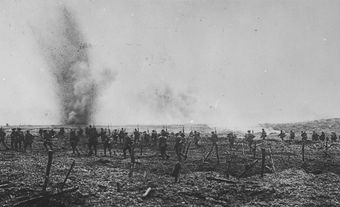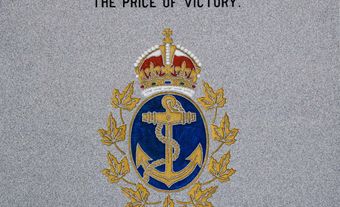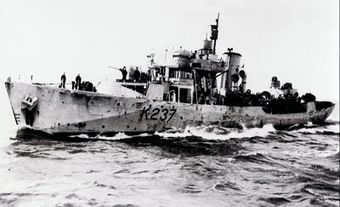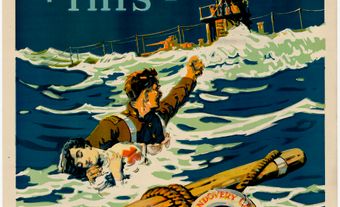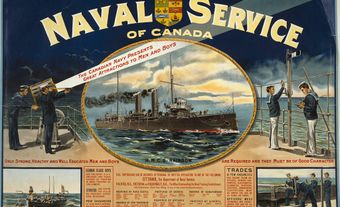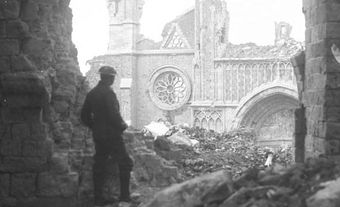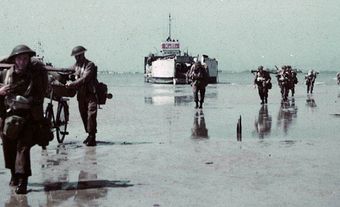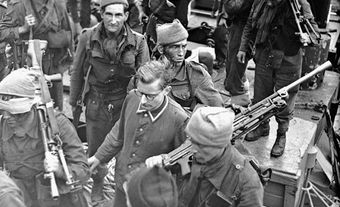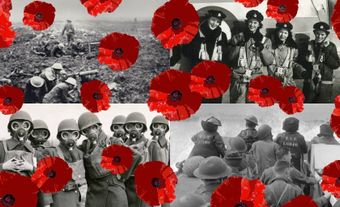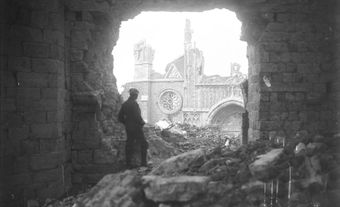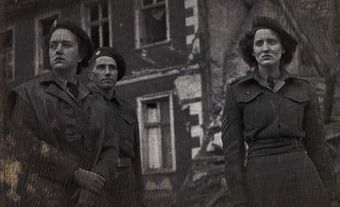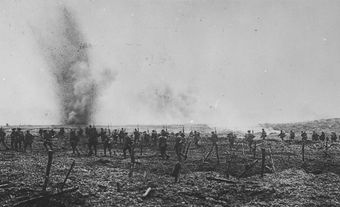U-boat operations threatened Canada's sovereignty in the First and Second World Wars. German submarines (Unterseeboote) operated in Canadian (and American) waters during both world wars, targeting merchant vessels sailing alone or in convoy. Dozens of merchant ships were lost due to enemy action, as well as several Canadian warships, and hundreds lost their lives.

First World War
During the First World War, Germany waged an unrestricted submarine campaign against all merchant vessels, including neutrals. In 1917, Britain finally instituted a convoy system for transatlantic shipping. Its success led to fears, however, that U-boats would cross the Atlantic to find easier targets.
German submarines first appeared in American waters in May 1918. In August, U-156 appeared in Canadian waters, laying mines off Halifax and setting the schooner Dornfontein ablaze in the Bay of Fundy. A few days later, U-156 sank the British tanker Luz Blanca 55 km south of Halifax. By the end of the war, German submarines had sunk several ships in Canadian waters, most of which were fishing vessels. There was little the Canadian navy could do, as it had few ships or trained personnel. (See Canada and Antisubmarine Warfare in the First World War.)

Second World War
U-boats returned to Canadian and American waters in 1942 during the Battle of the Atlantic, with improved technology and a dual strategic plan: attack single ships in order to prevent the formation of convoys and to pin down armed forces that might otherwise be deployed in European waters.
Both Canadian and American waters were vulnerable to U-boat attack. Canada's commitment to warfare overseas and to convoy escort in the Atlantic left limited resources for home defence. The United States, which had joined the war in December 1941, was inexperienced and unprepared.
In January 1942, German submarines launched their first attacks in North American waters (Operation Drumbeat/Paukenschlag). By April 1942, U-boats had sunk 198 ships (1,150,675 tons), half of them tankers, off the east coast of the United States. By May, there were 19 U-boats operating in American waters. The US failed to adopt a system of coastal convoys until the middle of May, despite advice from Britain and Canada. The delay was costly: approximately 360 ships were lost in American waters between January and June 1942.

Battle of the St. Lawrence
German submarines also operated in Canadian coastal waters during the Second World War. On the night of 11–12 May, U-553 torpedoed the steamers SS Nicoya and SS Leto off the north shore of the Gaspé Peninsula. By October, six independent U-boats had penetrated the St. Lawrence River and Gulf via the Cabot Strait and the Strait of Belle Isle and reached as far upriver as Rimouski, some 300 km from Quebec City.
In these waters, U-boats sank two Canadian warships (HMCS Raccoon and HMCS Charlottetown) and 20 ships in convoy in 1942. The sinking of the SS Caribou on 14 October 1942 with the loss of 31 crew and 136 passengers, was considered the worst inshore disaster of the battle. The greatest tonnage (nine ships, including Charlottetown), was sunk by U-517, whose captain, Paul Hartwig, rose after the war to vice-admiral of Canada's NATO partner, the federal German navy.
U-boat attacks in the St Lawrence fueled the conscription debate in the House of Commons, damaged Quebec-Ottawa relations, and forced the War Cabinet on 9 September 1942 to close the St Lawrence to all Allied shipping except the coastal trade.

U-boats patrolled Canadian waters until the end of the Second World War, and in the final phase destroyed the last three Canadian naval victims of the inshore war. HMCS Shawinigan was torpedoed by U-1228 in the Cabot Strait on 25 November 1944; none of the crew survived. U-806 sank HMCS Clayoquot on 24 December 1944, by the Halifax lightship, and U-190 sank HMCS Esquimalt on 16 April 1945 near the same spot. U-190 surrendered to Canada on 11 May 1945 and was commissioned in June of that year in the RCN as HMCS U-190. She was sunk ceremonially on 21 October 1947 where she had destroyed the Esquimalt. (See also Battle of the St. Lawrence.)
U-boat Special Missions and Landings
U-boats also undertook special missions during the Second World War. U-262 attempted to embark escaped German prisoners of war from North Point, PEI, on 6 May 1943, while U-536 attempted a similar feat on 28 September 1943 at Pointe de Maisonette, New Brunswick. U-119 and U-220 laid mines off Halifax and St. John's in June and October 1943, respectively.
German submarines landed men in Quebec and Labrador twice during the Second World War. On the night of 8–9 November 1942, the spy Werner Janowski came ashore from U-518 near New Carlisle, Quebec, and was almost immediately captured, later becoming an RCMP double agent. On 22 and 23 October 1943, the crew of U-537 landed an automatic weather station at Martin Bay, 32 km south of Cape Chidley, Labrador. The station transmitted data for about three months. Although sighted by casual visitors, it was not properly identified until July 1981.

 Share on Facebook
Share on Facebook Share on X
Share on X Share by Email
Share by Email Share on Google Classroom
Share on Google Classroom


